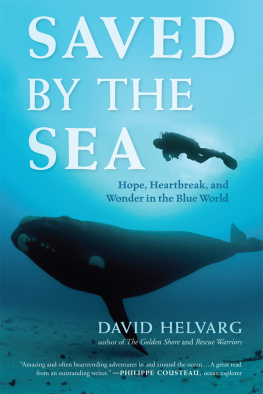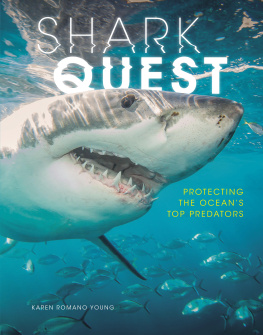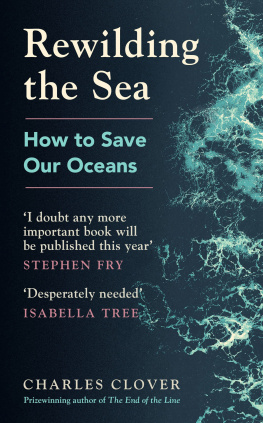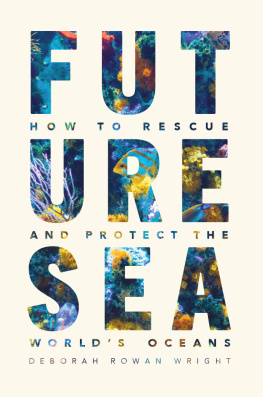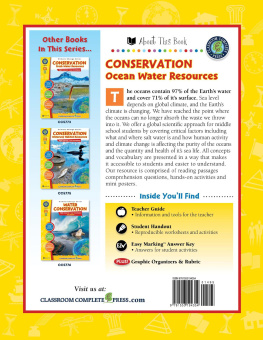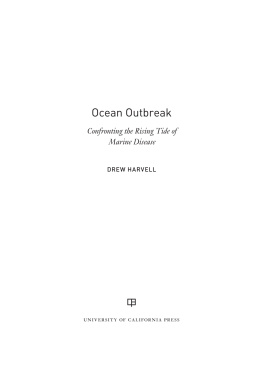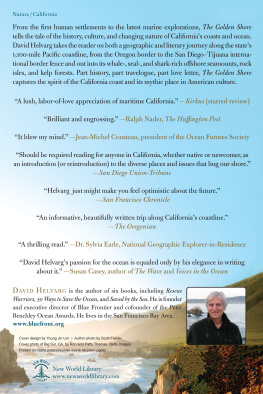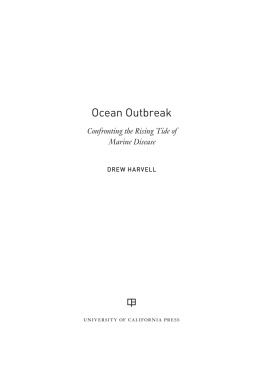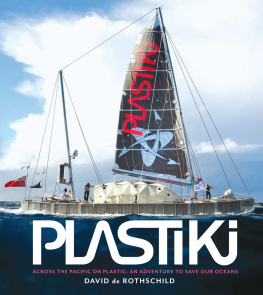Praise for 50 Ways to Save the Ocean
Helvargs book does a great job connecting readers with the ocean and the many problems it faces. The author urges people to continue using the ocean for boating, fishing, surfing, etc., but offers clear, simple steps we can take to enjoy it in a more sustainable manner. Well-structured, with entertaining animation and a useful annotated list of references, 50 Ways is a must-read for anyone and everyone who takes pleasure in the ocean environment.
Surf Life for Women
Combining wisdom and humor, scientific accuracy and artistic genius, Helvarg and Toomey show why the ocean matters to all of us, with clear answers to the crucial question, What can I do to help? Everyone, from toddler to tycoon, can find inspiration for action in this must-have guide to ocean care.
Sylvia Earle, Marine scientist, author and National
Geographic Explorer-in-Residence
My favorite chronicler of the environmental movement, David Helvarg has drafted a workable blueprint for grassroots action to save the seas.
Robert Kennedy, Jr. President, Waterkeeper Alliance
50 Ways is an invaluable tool for anyone who cares about preserving our precious marine
environment. This simple book answers the tough question, How can I help save the oceans?
Peter Benchley, Author of Jaws, and marine conservation advocate
This is a great bookit makes saving the oceans fun and doable (which it is, by the way)can't wait to try out number 43 on my cousins.
Ted Danson, Actor, Board member, Oceana
Our oceans are in crisis. These great natural treasures can be saved if the nation is committed to their protection and each of us are committed to their preservation. This book is an important guide for the public to saving our oceans.
Leon Panetta, Chair Pew Oceans Commission, former White House Chief of Staff
The ocean nurtures each and every one of us, without it human life cannot be sustained. So please read 50 Ways and make it a part of your everyday life.
Dr. Robert D. Ballard, author and discoverer of Titanic

2006 by David Helvarg All rights reserved. No part of this book may be reproduced by any means or in any form whatsoever without written permission from the publisher.
Illustrations by Jim Toomey
Cover design by Laura Beers
Book design by Madonna Gauding

Inner Ocean Publishing is a member of Green Press Initiative, a nonprofit program dedicated to supporting publishers in their efforts to reduce their use of fiber sourced from endangered forests. We elected to print this title on 50% postconsumer recycled paper with the recycled portion processed chlorine free.
As a result, we have saved the following resources:
27 trees, 1266 lbs of solid waste, 9855 gallons of water, 2374 lbs of net greenhouse gases,
19 million BTUs.
For more information on the Green Press Initiative, visit
http://www.greenpressinitiative.org.
PUBLISHER CATALOGING-IN-PUBLICATION DATA
Helvarg, David, 1951
50 ways to save the ocean / David Helvarg ; illustrated by Jim
Toomey. Maui, Hawaii : Inner Ocean, 2006.
p. ; cm.
ISBN-13: 978-1-930722-66-8 (pbk.)
ISBN-10: 1-930722-66-4 (pbk.)
1. Marine resources conservationUnited States.
2. Conservation of natural resourcesUnited States. I. Toomey,
Jim P. II. Title. III. Fifty ways to save the ocean.
GC1020 .H45 2006
333.91/64160973dc22 0604
Printed in the United States of America
05 06 07 08 09 10 DATA 10 9 8 7 6 5 4 3 2
DISTRIBUTED BY PUBLISHERS GROUP WEST
For information on promotions, bulk purchases, premiums, or educational use, please
contact: 866.731.2216 or
ways to
save the
ocean
ways to
save the
ocean
David Helvarg
New World Library
Novato, California
Contents
by Philippe Cousteau






If theres one thing I learned growing up in my family, it was that we as individuals need to protect the environmentnot only by volunteering, donating money, or going on great adventures of discovery, as my grandfather and father have done, but also by making fundamental changes in our everyday habits. When considering your impact on the planet, realize that the critical concept is not that you can make a difference; its that everything you do already does make a difference. Thats a subtle but very important distinction. The first statement implies that by simply going about your everyday life you dont have any real impact on the environment; not until you make a particular effort do you finally make a difference. The truth is, everything you do makes a difference, and all of your actions have consequences. Things as simple as what kind of toilet paper you buy or where you choose to get married (on the beach, for instance; see action 2) have a ripple effectan echo that resounds from your life and then, in unforeseen ways, comes back to enrich it or degrade it.
We have all heard the saying think globally, act locally, and its true that our actions have far-reaching effects beyond our own local sphere of influence. When we choose to buy organic produce (see action 12) or to eat responsible seafood (action 13), we send a message to industry that organic, responsible, and humane food is important to customers and thus to its bottom line. Believe me, as Bono, the lead singer of U2, says, Shopping is politics. When any of us makes a decision as a consumer, that decision is recorded, numbered, and noted in some office in some town in some place that we may never have heard ofbut I guarantee that what we dont see does affect us.
We must each start by changing our own behavior, though thats not the end of our responsibility. To truly change the course of events, we must affect every person we come in contact with. For example, a good friend of mine recently eliminated all cleaning products that contain chlorine bleach and other harmful substances from her house. Now, every friend who visits gets a tour of her pantry and learns which environmentally friendly products have replaced the harmful ones.


